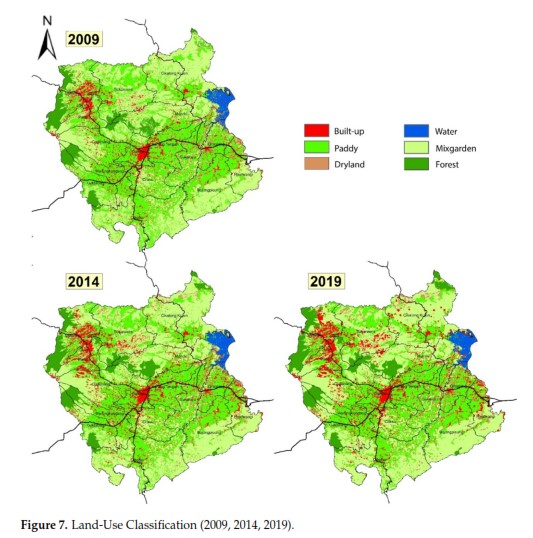Urban Form Dynamics and Modelling towards Sustainable Hinterland Development in North Cianjur, Jakarta–Bandung Mega-Urban Region

Author: Anoraga Jatayu, Izuru Saizen, Ernan Rustiadi, Didit Okta Pribadi, Bambang Juanda
Abstract: The urban form is the physical configuration of a city, developed over time and space. Urban form can be considered at different scales, from region to neighborhood, each carrying a different focus. North Cianjur serves as the hinterland and one of the conurbation corridors of the Jakarta–Bandung Mega-Urban Region, meaning that the balance between its function as an environmental buffer area and the destination of urban growth needs to be planned carefully. This paper explores the dynamics in North Cianjur and employs several model scenarios as a planning intervention using landscape dynamic tools and land-change modeling, with three scenarios employed: Business as Usual (BAU), Spatial Planning Policy (SPP), and Urban Containment (UCT). The result show that North Cianjur has transformed into a polycentric region with two urban zones, a peri-urban zone, and a rural zone in the northernmost part of the region. Urban form trends show a sprawling built-up pattern outside urban zones, and a compacted trend in urban zones due to expansion from the Jakarta and Bandung Metropolitan Area. UCT models appear to be the most optimal for implementation in North Cianjur, representing a way to accommodate urban growth and expansion inside the urban center while still maintaining regional sustainability.
Keywords: urban form, sustainable urban development, landscape dynamics, land-use modelling, spatial planning
Journal URL: https://doi.org/10.3390/su14020907
